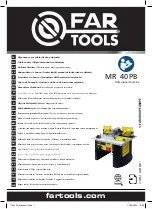
24
56 bytes from 172.16.1.2: icmp_seq=0 ttl=254 time=7.000 ms
56 bytes from 172.16.1.2: icmp_seq=1 ttl=254 time=0.000 ms
56 bytes from 172.16.1.2: icmp_seq=2 ttl=254 time=1.000 ms
56 bytes from 172.16.1.2: icmp_seq=3 ttl=254 time=1.000 ms
56 bytes from 172.16.1.2: icmp_seq=4 ttl=254 time=2.000 ms
--- Ping statistics for 172.16.1.2 ---
5 packet(s) transmitted, 5 packet(s) received, 0.0% packet loss
round-trip min/avg/max/std-dev = 0.000/2.200/7.000/2.482 ms
The output shows that the router can communicate with the host on subnet 172.16.1.0/24.
# Ping a host on subnet 172.16.2.0/24 from the router to check the connectivity.
<Router> ping 172.16.2.2
Ping 172.16.2.2 (172.16.2.2): 56 data bytes, press escape sequence to break
56 bytes from 172.16.2.2: icmp_seq=0 ttl=255 time=2.000 ms
56 bytes from 172.16.2.2: icmp_seq=1 ttl=255 time=7.000 ms
56 bytes from 172.16.2.2: icmp_seq=2 ttl=255 time=1.000 ms
56 bytes from 172.16.2.2: icmp_seq=3 ttl=255 time=2.000 ms
56 bytes from 172.16.2.2: icmp_seq=4 ttl=255 time=1.000 ms
--- Ping statistics for 172.16.2.2 ---
5 packet(s) transmitted, 5 packet(s) received, 0.0% packet loss
round-trip min/avg/max/std-dev = 1.000/2.600/7.000/2.245 ms
The output shows that the router can communicate with the host on subnet 172.16.2.0/24.
# Ping a host on subnet 172.16.1.0/24 from a host on subnet 172.16.2.0/24 to check the connectivity.
Host B can be successfully pinged from Host A.
IP unnumbered configuration example
Network requirements
As shown in
, two routers on an intranet are connected to each other through serial interfaces
across a Digital Data Network, and they each connect to a LAN through Ethernet interfaces.
To save IP addresses, configure the serial interfaces to borrow IP addresses from the Ethernet interfaces.
Summary of Contents for MSR 2600 Series
Page 6: ...We appreciate your comments...
Page 33: ...18 AC vlan1 quit...
Page 118: ...103...
















































